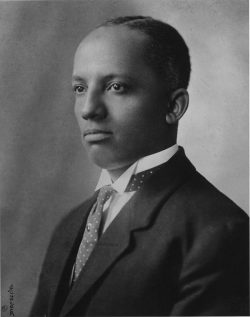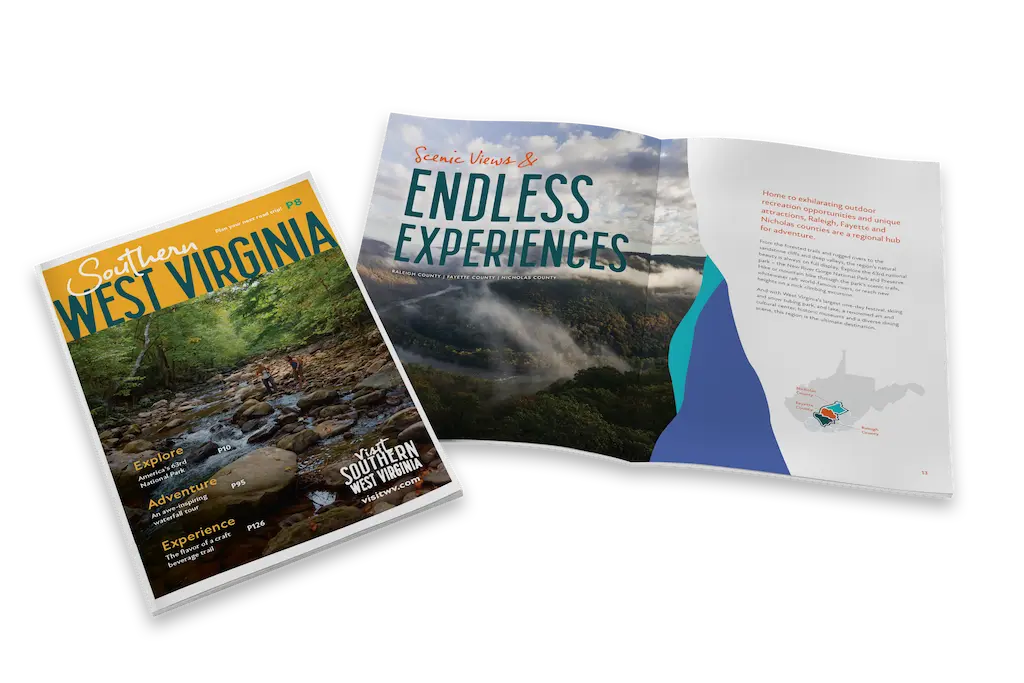Celebrate Black History Month in Southern West Virginia
February 2, 2023As we celebrate Black History Month in Southern West Virginia, we’re taking a look at some of our most prominent Black leaders and historical sites where you can learn more about the rich African American history of our region.
Did you know the founder of Black History Month was once a Southern West Virginia educator? The “Father of Black History,” Carter G. Woodson founded Negro History Week, in February 1926, which has evolved into what we celebrate today, Black History Month.
Woodson started his career in the coalfields of the New River Gorge. While working in the Kaymoor and Nuttallburg mines, he listened to the stories of fellow Black miners and was inspired to document the contributions and struggles of African Americans. After saving up enough money to pay for his education, he became a teacher in the New River Gorge coal town of Winona.
A statue of Woodson in Huntington, West Virginia, commemorates his accomplishments as a principal at Douglas High School, the same school where he earned his high school diploma, as well as his remarkable strides in preserving African American culture and history for future generations.
Woodson was a historian, journalist and one of the first African American history scholars. He earned a Ph.D. from Harvard, the second African American man to ever achieve this. He founded the Association for the Study of African American Life and History and the Journal of African American History.
A fiery speaker and polished politician, Booker T. Washington was a major influence on race relations in the South. Born into slavery and growing up in Malden, West Virginia, Washington worked packing salt by day and pursued an education at night. He eventually became a United States Presidential Adviser.
There is a historical marker in Malden honoring Washington. You can also see a reconstructed version of his boyhood home in Institute, West Virginia. Institute is also the home of West Virginia State University, which Washington, an educator himself, had a hand in founding.
Born and raised in Charleston, West Virginia, Sullivan’s life course was set when a shopkeeper on Capitol Street refused to sell him a Coke because of the color of his skin. This event, which happened at age 12, ignited a passion for equality in Leon Sullivan. A Baptist minister and equal rights activist, Sullivan championed the idea of “self-help” for those who had never before had opportunities to advance themselves. He advocated training to help prepare African Americans to seize the new job options open to them and thrive in those positions.
African Americans have a strong political history in McDowell County. When E. Howard Harper, a McDowell County delegate, suddenly died in 1928, his wife, Minnie Buckingham Harper, filled the role. In doing so, she became the nation’s first female African American legislator. Her appointment highlighted the growing role of women in American politics and the importance of the African American political coalition in Southern West Virginia.
Keystone was one of the first African American established communities in Southern West Virginia. The town elected West Virginia’s first Black mayor and established the first major minority newspaper — The McDowell Times. M.T. Whittico, editor and publisher, attracted readers of all backgrounds. He actively contributed to politics, too.
Tyler Hill was another prominent figure in Keystone. A lawyer by training, the Virginia native became part of Whittico’s team. He owned part of The McDowell Times and helped promote readership. Among other things, Hill became an assessor for Keystone and a politician.
African American Heritage Family Tree Museum
Located in Ansted, visitors can learn about the life and culture of African Americans living in Ansted from the late 1800s to the present day. The exhibit features William K. Rogers, a coke oven supervisor; James Brandon, a municipal judge; the Mt. Chapel Baptist Church; needlework from Fannie Jeter; and a rich and varied assortment of other items. The museum also houses Civil War relics and Elwood Maples’ Coal Collection.
The Cultural & Heritage Museum is open Monday through Friday from 8 a.m. to noon, then from 1 p.m. to 4 p.m. Admittance is free but donations are welcomed and appreciated. Call 304-658-5901 for more information or to schedule a group tour on Saturdays.
Located in McDowell County, West Virginia, the Kimball World War I Memorial was the first memorial built in the United States to honor African American veterans of World War I. Today it is the only such memorial remaining.
The Kimball War Memorial was the focal point of community life for decades, serving as a cultural and social center. Over time, the declining coal industry led to shrinking employment, income and population. The building was abandoned and fell victim to a fire in 1991, leaving only the exterior shell of the memorial.
The building was placed on the National Historic Register in 1993, funds were raised and the memorial was restored. Today it is open for special events and tours.
African American Heritage Tour
This self-guided driving tour and smartphone app was developed by the New River Gorge National Park and Preserve and its partners as a way for visitors to uncover the history and tell the stories of the many Black coal miners, railroad workers and other community members that helped shape the New River Gorge region. The tour includes 17 sites and spans four counties in Southern West Virginia: Summers, Raleigh, Fayette and Nicholas.
What notable African American West Virginians and historical sites can you add to our list?



